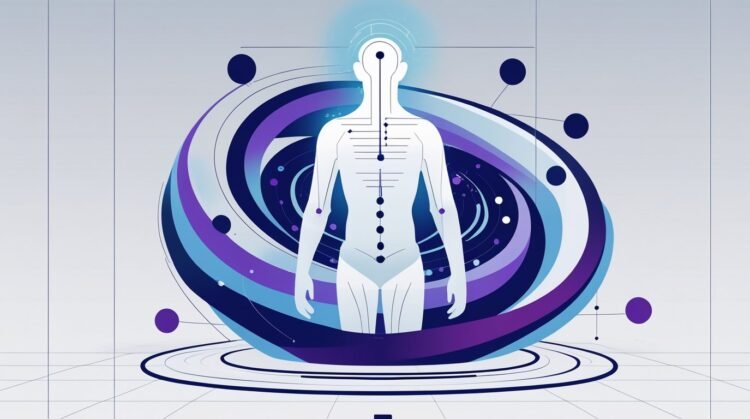Most people struggle with traditional fasting methods because they follow rigid schedules that ignore their body’s unique needs. Data Driven Fasting revolutionises your approach by using precise blood glucose measurements to determine your optimal eating windows. Unlike conventional fasting protocols, this method helps you understand when your body genuinely needs fuel, allowing you to make smarter nutritional choices. By tracking your personal data, you’ll discover exactly when to eat for maximum fat burning and metabolic health. Your fasting journey becomes a customized experience, backed by real-time biological feedback rather than arbitrary time restrictions.
Key Takeaways:
- Data-Driven Fasting uses blood glucose levels as a personal fuel gauge, replacing rigid time-based fasting windows with a tailored approach based on your body’s actual needs.
- Instead of following someone else’s fasting schedule, this method helps you understand and respond to your unique metabolic signals, preventing overeating cycles.
- The approach requires only a simple glucometer to validate hunger signals and optimize meal timing, making it accessible and practical.
- This method focuses on finding the minimum effective dose of fasting that works for your body, avoiding the restrict-binge cycle common in traditional fasting.
- By learning to interpret your body’s true hunger signals, you naturally align eating patterns with your metabolic needs, leading to sustainable results.

The Evolution of Fasting: From Data-Driven to Glucose Signals
The Shift in Perspective
Modern fasting has evolved from rigid time-based protocols to a more sophisticated, personalized approach using real-time glucose monitoring. Your body’s glucose levels now serve as a precise biological clock, replacing arbitrary eating windows. This data-driven method allows you to optimize your fasting periods based on your unique metabolic responses, ensuring more effective and sustainable results.
Implications for Practitioners
This revolutionary approach transforms how you implement fasting in your daily routine. Instead of following preset fasting schedules, you’ll learn to interpret your body’s glucose signals to determine optimal eating times. The method eliminates guesswork and provides clear, measurable markers for when to eat and when to fast.
The practical applications extend beyond simple timing – you’ll discover how different foods affect your glucose levels, enabling smarter meal choices. Your fasting decisions become rooted in biological feedback rather than clock-watching. This systematic approach has shown superior results in weight management and metabolic health compared to traditional time-restricted feeding methods. Real-world data from thousands of practitioners demonstrates consistently better adherence rates and sustainable outcomes when using glucose signals as their primary guide.

Launching Your Data-Driven Fasting Journey
Initial Steps to Consider
Start by establishing your baseline blood glucose levels over 3-4 days of normal eating. Purchase a reliable glucometer and test strips, and begin measuring your glucose levels before meals. Track these numbers in a simple spreadsheet or app, noting the time and your hunger level. This baseline data becomes your personal “fuel gauge” that guides when to eat.
Tools and Resources for Success
Equip yourself with the right tools: a quality glucose meter (avoid CGMs initially), testing strips, and a tracking method – whether digital or paper-based. The Glucose Signals app streamlines data collection and analysis, while our comprehensive manual provides troubleshooting guidance.
Your toolkit should also include a food diary to correlate glucose responses with different meals. Consider investing in a kitchen scale to portion meals accurately during the initial learning phase. The Glucose Signals program provides detailed food lists categorized by their impact on blood glucose, helping you make informed choices. Weekly progress check-ins help fine-tune your approach based on your body’s unique responses.
Uncovering the Core Principles of Data-Driven Fasting
Data-Driven Fasting revolutionises traditional fasting approaches by using blood glucose measurements as your personal fuel gauge. Rather than following arbitrary eating windows, you’ll learn to eat based on your body’s actual energy needs. This method creates a sustainable feedback loop where your decisions are guided by real-time biological data, not clock-watching or willpower.
The Interplay of Data and Personalisation
Your blood glucose readings provide a precise window into your metabolism’s current state. By tracking these numbers, you’ll identify your unique glucose trigger point – the level at which your body genuinely needs refueling. This personalized approach ensures you’re not fasting longer than necessary while still achieving optimal results.
How to Read and Respond to Your Body’s Signals
Blood glucose monitoring reveals when your body has depleted its stored energy and requires nourishment. The ideal time to eat arrives when your glucose drops below your personal trigger point, typically between 70-85 mg/dL for most people. This data-driven approach eliminates guesswork and emotional eating patterns.
Beyond just numbers, you’ll learn to correlate physical hunger cues with your glucose readings. Mental clarity, steady energy, and true hunger align with optimal feeding times. When glucose levels are elevated, you might experience brain fog, energy crashes, or false hunger signals. This awareness helps break the cycle of reactive eating and establishes a more intuitive relationship with food.
The Psychology Behind Your Eating Habits
Your eating behaviours are deeply rooted in both biological drives and learned responses. Modern food environments have created a perfect storm where highly processed foods hijack your natural reward pathways, making it increasingly difficult to rely on hunger and fullness cues. Understanding these psychological mechanisms is the first step toward regaining control of your eating patterns.
The Hijacking of Natural Appetite Signals
Your brain’s reward system has been systematically rewired by engineered food combinations of salt, sugar, and fat. Food manufacturers have perfected the “bliss point” – the precise amount of these ingredients that maximise palatability and drive overconsumption. This manipulation leads to a disconnect between true hunger signals and eating behavior, creating cycles of craving and reward that override your body’s natural appetite regulation.
Crafting Your Personalised Fasting Blueprint
Your unique metabolism, lifestyle, and goals demand a customised approach to fasting. By tracking your blood glucose responses to different meals and fasting durations, you’ll uncover the optimal eating pattern that works specifically for your body. The key is measuring your personal glucose triggers rather than following someone else’s arbitrary schedule.
Tailoring Refuelling Strategies for Optimal Results
Your refuelling strategy should match your activity level, stress patterns, and metabolic health. Breaking your fast with protein-rich, nutrient-dense foods helps maintain stable blood sugar and sustained energy. Experiment with different meal compositions and timing to find what keeps your glucose levels most stable.
Fine-tune your approach by noting which foods trigger glucose spikes and which maintain steady levels. Athletes might need more frequent refuelling windows, while desk workers could thrive on longer fasts. The most effective strategy is one that you can sustain long-term while maintaining metabolic flexibility. Consider factors like workout timing, sleep quality, and stress levels when adjusting your refuelling schedule.
To wrap up
Summing up, Data-Driven Fasting revolutionises your approach to eating by putting control back in your hands. By monitoring your blood glucose levels, you gain precise insights into your body’s true hunger signals. This personalized method helps you optimize meal timing and food choices based on your unique metabolic needs. When you’re ready to transform your relationship with food and achieve sustainable results, the Data Driven Fasting App provides the tools and guidance you need to succeed. Your journey to metabolic health starts with understanding your body’s signals.
FAQ
Q: What is Data-Driven Fasting and how does it differ from traditional fasting methods?
A: Data-Driven Fasting is a personalised approach that uses your blood glucose levels as a guide for when to eat, rather than following fixed eating windows. This method helps you understand your body’s unique metabolism and natural hunger signals, allowing you to eat when your body genuinely needs fuel rather than following arbitrary time-based rules.
Q: How do I measure my blood glucose for Data-Driven Fasting?
A: You only need a basic glucometer to measure your blood glucose levels. Take measurements before meals to validate your hunger signals. This simple tool provides immediate feedback about whether your body needs fuel, making it much more effective than expensive continuous glucose monitors (CGMs).
Q: What are the main benefits of following Data-Driven Fasting?
A: The primary benefits include sustainable weight loss, improved metabolic health, better understanding of genuine hunger signals, prevention of overeating, and the development of a healthier relationship with food. This method also helps eliminate the cycle of restriction and binging common in traditional fasting approaches.
Q: How long does it take to see results with Data-Driven Fasting?
A: Most people start seeing improvements in their blood glucose levels and hunger patterns within the first week. Physical results, such as weight loss and increased energy, typically become noticeable within 2-4 weeks of consistent practice. However, individual results may vary based on starting point and adherence to the program.
Q: Can I combine Data-Driven Fasting with other dietary approaches?
A: Yes, Data-Driven Fasting can be combined with various dietary approaches such as low-carb, keto, or Mediterranean diets. The key is to use your glucose readings as a guide for timing your meals, regardless of your preferred eating style. This flexibility makes it adaptable to different dietary preferences and lifestyles.


























